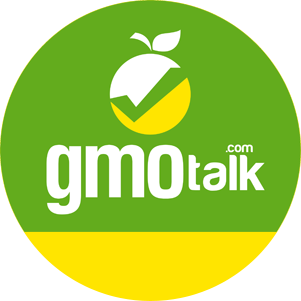The Roundup Ready soybean, also known as soybean 40-3-2, is a transgenic soybean that has been immunized to the Roundup herbicide. Since the soybean’s natural trypsin inhibitors provide protection against pests, the only major problem in soy farming was weeds, thus making soybean 40-3-2 revolutionary. According to Dr. Gerhardt Wenzel, a professor at the Technische Universität in Munich, Germany and a deputy member of the “Zentrale Komission für die Biologische Sicherheit” (ZKBS), the glyphosate in the herbicide would inhibit the soybean plant’s ESPSP gene, which is involved in the maintenance of the “biosynthesis of aromatic metabolites,” and cause the plant to die along with the weeds for which the herbicide was meant. A plasmid which was transferred to the soybean cells through the cauliflower mosaic virus was soon developed to provide immunity to glyphosate-containing herbicides, and, after this process was perfected, the Roundup Ready soybean was ready, first hitting the US market in 1996.
As for soybeans, approximately 95% of the US crop is GM, and approximately 85% of the world’s soybean crop is processed into soybean meal and vegetable oil. The bulk of the soybean crop is grown for oil production, with the high-protein defatted and “toasted” soy meal used as livestock feed and dog food. 98% of the U.S. soybean crop is used for livestock feed. A smaller percentage of soybeans are used directly for human consumption.
After feeding hamsters for two years over three generations, those on the GM diet, and especially the group on the maximum GM soy diet, showed devastating results. By the third generation, most GM soy-fed hamsters lost the ability to have babies. They also suffered slower growth, and a high mortality rate among the pups.
And if this isn’t shocking enough, some in the third generation even had hair growing inside their mouths–a phenomenon rarely seen, but apparently more prevalent among hamsters eating GM soy.
And if this isn’t shocking enough, some in the third generation even had hair growing inside their mouths–a phenomenon rarely seen, but apparently more prevalent among hamsters eating GM soy.
Soybeans – Gene taken from bacteria (Agrobacterium sp. strain CP4) and inserted into soybeans to make them more resistant to herbicides.
Soy allergies jumped 50% in the U.K. just after GM soy was introduced.
If GM soy was the cause, it may be due to several things. The GM protein that makes Roundup Ready Soy resistant to the herbicide does not have a history of safe use in humans and may be an allergen. In fact, sections of its amino acid sequence are identical to known allergens.A portion of the transgene from ingested GM soybeans, along with the promoter that switches it on, transfers into human gut bacteria during ingestion. The fact that the transformed bacteria survives applications of Roundup’s active ingredient, glyphosate, suggests that the transgene continues to produce the Roundup Ready protein. If true, then long after people stop eating GM soy they may be constantly exposed to its potentially allergenic protein, which is being created within their gut. (This protein may be made more allergenic due to misfolding, attached molecular chains, or rearrangement of unstable transgenes, but there is insufficient data to support or rule out these possibilities.)Studies suggest that the GM transformation process may have increased natural allergens in soybeans. The level of one known allergen, trypsin inhibitor, was 27% higher in raw GM soy varieties. More worrisome, it was as much as sevenfold higher in cooked GM soy compared to cooked non-GM soy. Not only is this higher amount potentially harmful, the finding also suggests that the trypsin inhibitor in GM soy might be more heat stable and, therefore, even more allergenic than the natural variety.It is also possible that changes in GM soy DNA may produce new allergens. Although there has never been an exhaustive analysis of the proteins or natural products in GM soy, unpredicted changes in the DNA were discovered. A mutated section of soy DNA was found near the transgene, which may contribute to some unpredicted effects. Moreover, between this scrambled DNA and the transgene is an extra transgene fragment, not discovered until years after soy was on the market. The RNA produced is completely unexpected. It combines material from all three sections: the full-length transgene, the transgene fragment, and the mutated DNA sequence. This RNA is then further processed into four different variations, which might lead to the production of some unknown allergen.
*Sourced from www.genengnews.com
To discuss this page and hopefully refine this information , Click Here!

